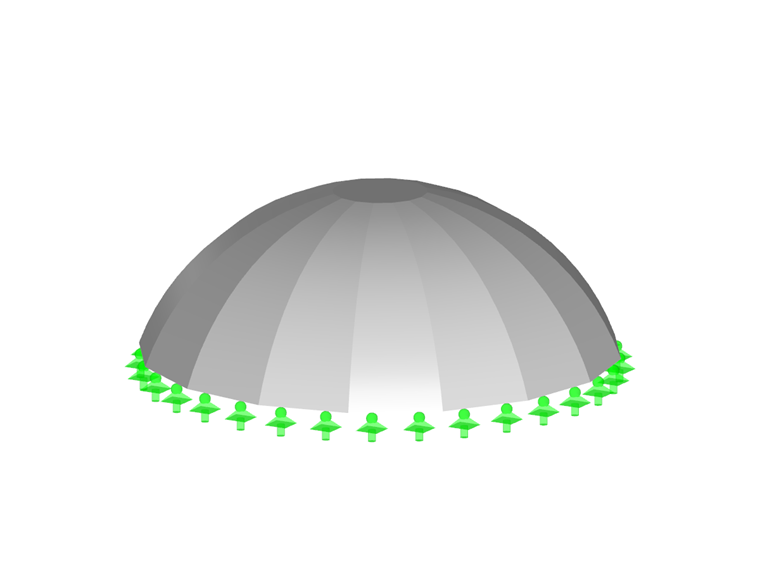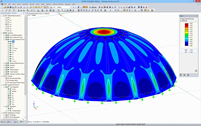Pneumatic Wedge Method
The fabrication of the multi‑curved shell starts from a flat position. There, a round concrete slab with wedge-shaped cutouts is created. In addition, inflatable air cushions are arranged under the slab and the wedge-shaped gaps.
At the slab's circumference, unbonded tendons are installed, which are stressed on two opposing stress locations. At the same time, the air cushion placed below the shell is inflated. Along with the inflation, the wedge-shaped air cushions are compressed. The circumference of the concrete slab is then reduced; the slab is arched upward and forms a double-curved shell.
The purpose of the pneumatic wedges is to stabilize the structure during the forming process. After the completion of the shell, it is possible to reuse them.
In the experiment of the Vienna University of Technology, the shell was deflected to the intended height of 3.5 m (11.5 ft). Then, the tensioning cables (strands) were fastened on the anchor blocks and the joints between the elements were filled.
| Structural Engineering | Vienna University of Technology, Austria Institute of Structural Engineering Concrete Construction E212-2 www.betonbau.tuwien.ac.at |





